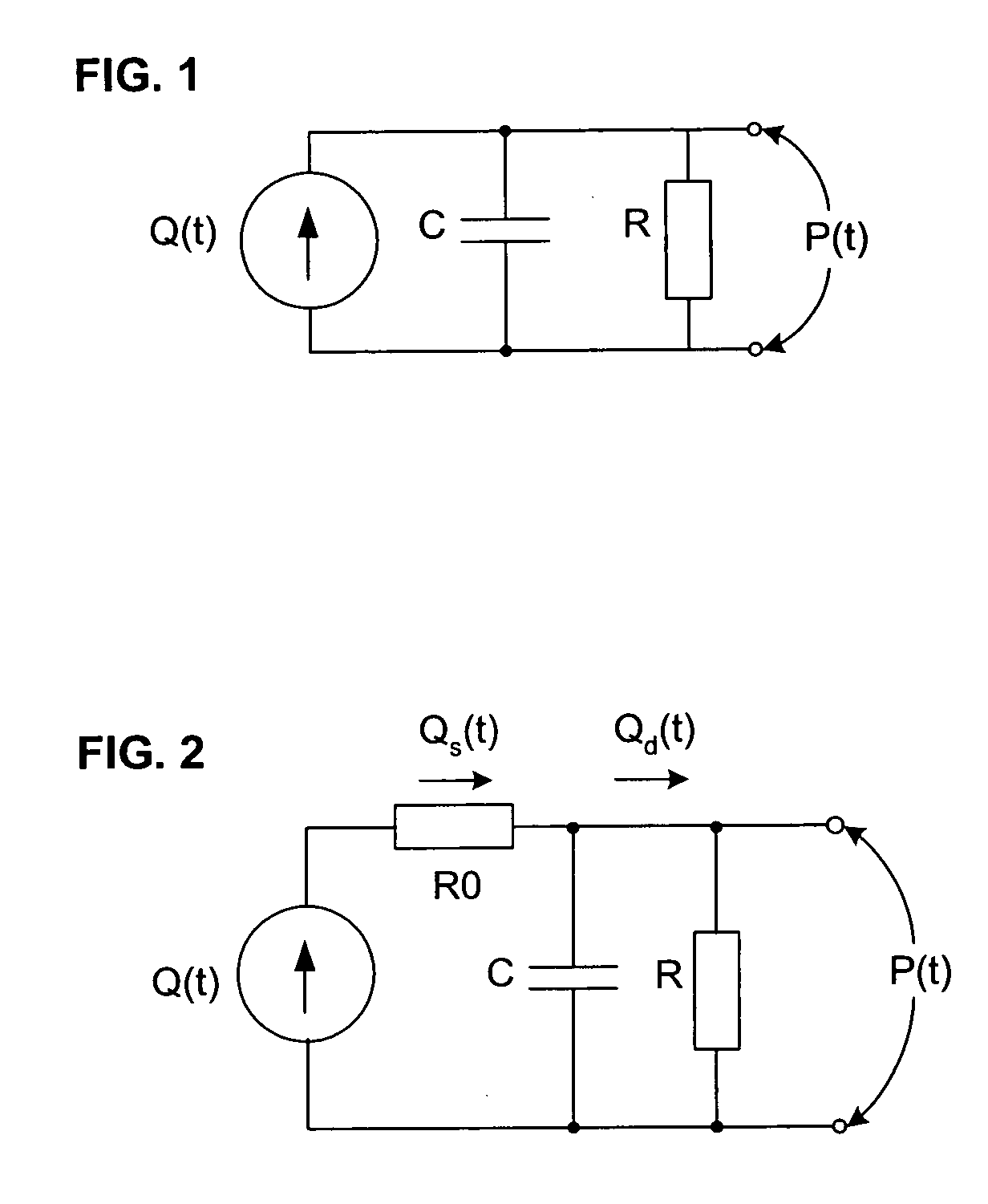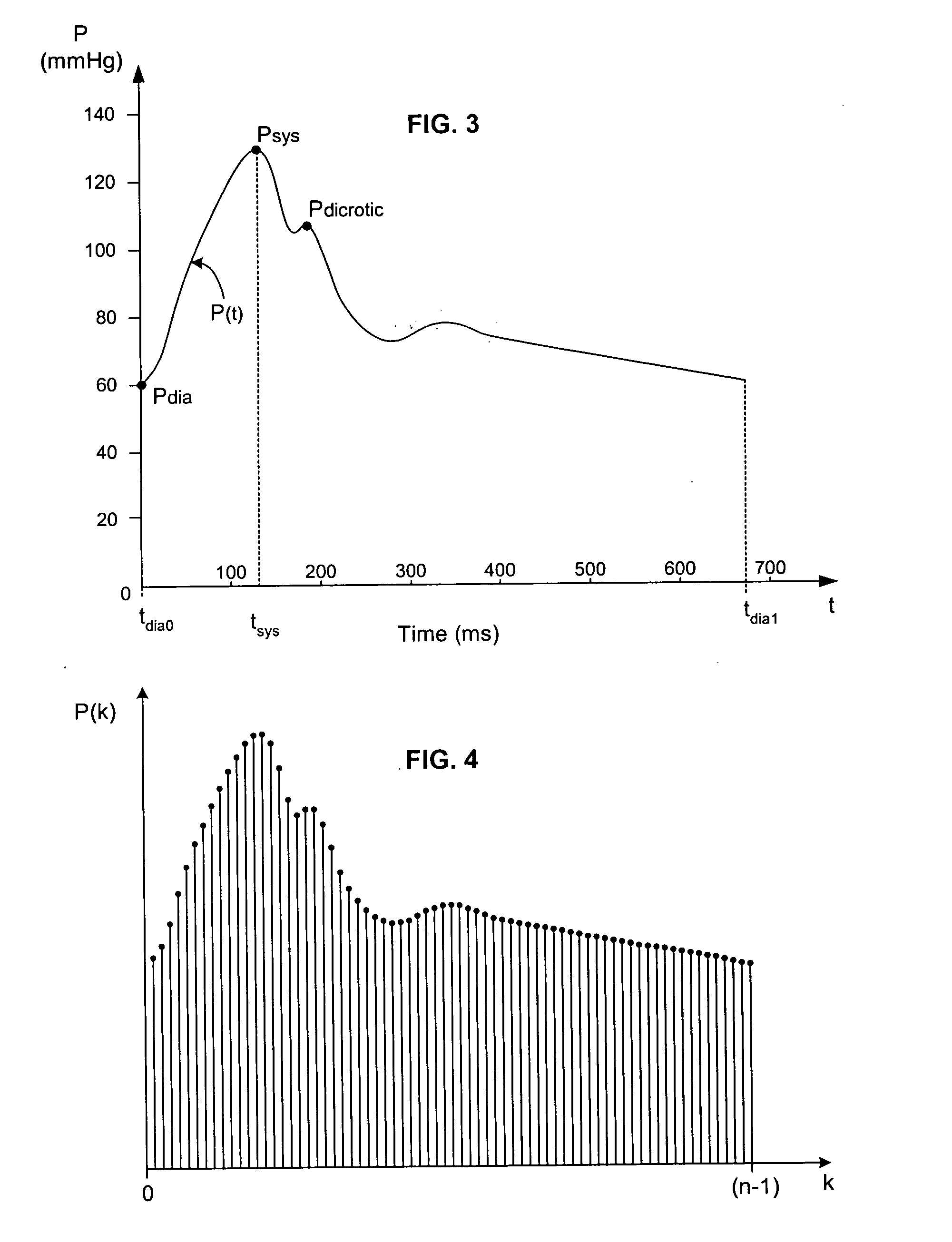Pulse contour method and apparatus for continuous assessment of a cardiovascular parameter
a continuous assessment and cardiovascular parameter technology, applied in the field of method for estimating cardiovascular or hemodynamic parameters, can solve the problems of insufficient co measurement on actual patients, inability to meet the needs of patients, and inability to accurately measure cardiac output in a hospital
- Summary
- Abstract
- Description
- Claims
- Application Information
AI Technical Summary
Benefits of technology
Problems solved by technology
Method used
Image
Examples
Embodiment Construction
[0044] In broadest terms, the invention involves a new pulse contour method and system implementation for continuous assessment of cardiac output (or of any value that can be derived from a cardiac output estimate) from peripheral blood pressure. In general, the invention posits an assumed, non-impulsive input flow waveform, at least one of whose defining parameters is a function of at least one value of an input pressure waveform data set, and which is then used in a system-identification routine to determine the parameters of a model of the relationship between input flow and output pressure. Parameters characterizing the relationship are then used to compute an estimate of the cardiovascular parameter of interest.
[0045] The primary exemplifying embodiment of the invention described below uses an autoregressive algorithm to compute values of the arterial compliance and the peripheral resistance. The invention then applies these values to the model as well. The following discussio...
PUM
 Login to View More
Login to View More Abstract
Description
Claims
Application Information
 Login to View More
Login to View More - R&D
- Intellectual Property
- Life Sciences
- Materials
- Tech Scout
- Unparalleled Data Quality
- Higher Quality Content
- 60% Fewer Hallucinations
Browse by: Latest US Patents, China's latest patents, Technical Efficacy Thesaurus, Application Domain, Technology Topic, Popular Technical Reports.
© 2025 PatSnap. All rights reserved.Legal|Privacy policy|Modern Slavery Act Transparency Statement|Sitemap|About US| Contact US: help@patsnap.com



